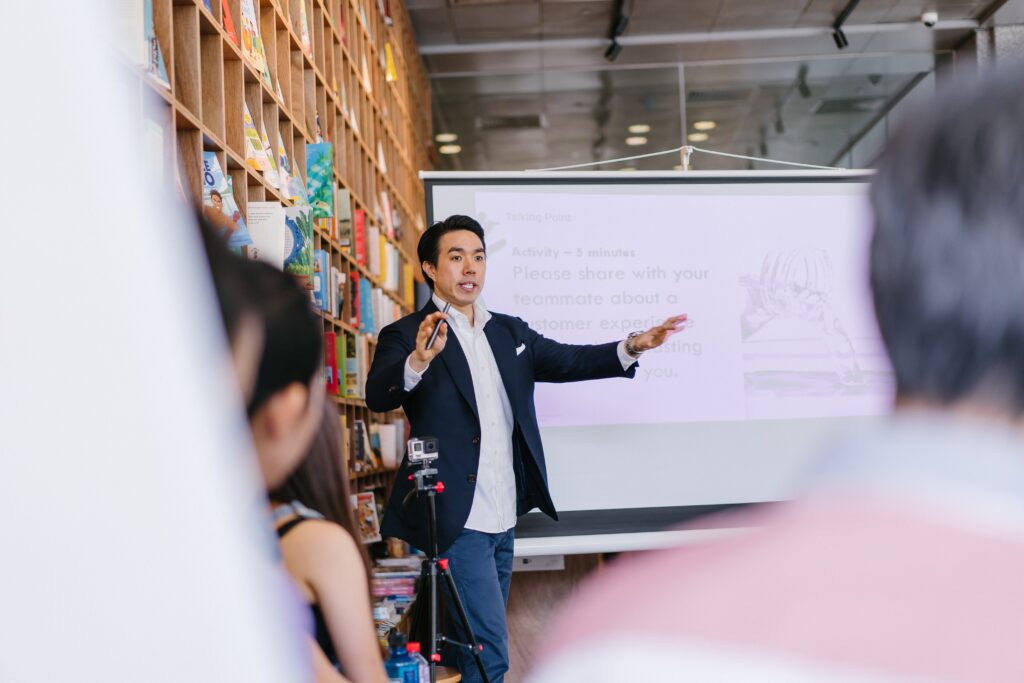What Is Active Learning?
Active learning is a student-centered approach that places responsibility for learning with learners and prioritizes collaboration with classmates. Teachers are facilitators rather than unilateral transmitters of information. The presentation of facts, often delivered through lecture-only instruction, is replaced in favor of in-class discussions, problem-solving challenges, cooperative learning, and written exercises. Other examples of active learning techniques include role-playing, case studies, group projects, think-pair-share, peer teaching, debates, just-in-time teaching, and short demonstrations followed by in-class discussion.
Two ways to make lectures more active
There are two simple ways to promote active learning through discussion. The first method is the mini-lecture, in which the instructor talks for ten to twenty minutes about a particular topic and students work out the learning in writing with note-taking. Then a break is taken so that students can consolidate their notes, find gaps, and work with their classmates to fill in the gaps. The second method is an active listening lecture where students just listen without taking notes and then after ten to twenty minutes work with a classmate or small group to try to recall, clarify, and reinforce the content of the lecture utilizing instance a concept map.
Examples of active learning techniques
- Flipped-Classroom: Students read assigned material outside of class, answer short questions online, and then participate in collaborative exercises during the following class sequence.
- Prior knowledge Probe: Students conduct a short, simple questionnaire at the beginning of a new unit or lesson, or prior to introducing an important new topic. For students, it highlights key information to be studied, offering a preview of material to come and a review of prior knowledge. For lecturers, it helps determine the best starting point and the most appropriate level for a lesson.
- Think Pair Share: Students think about the answer to a question. Then they pair up and share what they wrote with a neighbor. A whole group discussion can follow.
- Opinion Poll: Students use clicker tools to give their opinions on an issue or question.
- Problem-Solving with real Data: Students use a variety of data to investigate scientific questions about the content they are learning.
- Peer Review: Students review and comment on materials written by their peers.
- Debate: Promoting a successful debate depends on the proper phrasing of questions that encourage higher-order thinking.
- Role Play: Each student takes on the role of a person affected by a complex, multi-layered problem. Then, they research appropriate arguments from that specific role and finally present them in a public debate with their peers.
- Game-Based Learning: Students complete competitive exercises in the transfer phase, where students can either compete against each other or use computer simulations and formative assessment tutorials.
- Focused listing: Students write a keyword at the top of a page. For 2 – 3 minutes, they jot down related terms important to the understanding of that topic. They then pair up with their peers, sharing lists and explanations of why concepts were included. This will build their knowledge base and clarify their understanding of the topic, including concepts they associate with a central point. It can be used before, during, or after a lesson.
- Applications Cards: After students have read or heard about an important principle, generalization, theory, or procedure, hand out an index card and ask students to write down at least one possible, real-world application for what they have just learned. A whole group discussion about the findings can follow.
- Directed Paraphrasing: Students paraphrase a portion of a lesson for a specific audience and purpose in their own words.
- Tweet: At the end of the lesson or discussion, students summarize the overall concepts in a one-sentence format or in less than 280 characters like a tweet.
- Minute Paper: Students note, “What was the most important thing you learned today?” It’s the most common format to recall and self-assess the understanding.
- Muddiest Point. Students reflect, “What questions remain uppermost in my mind as we conclude this class session?” This question asks for feedback about where students are still confused.
The Top Ten Guidelines for Lecturing
- Be aware that lecturing is not well suited for higher levels of learning.
- Decide what you want the students to know and be able to do as a result of the lecture.
- Outline your lecture and share that outline with students.
- Choose relevant, concrete examples.
- Find out about the students, their backgrounds, and their goals.
- Permit students to stop you to ask questions, make comments, or ask for review.
- Intersperse periodic summaries.
- Start with a question, problem, or current event.
- Watch the students. If you think they don’t understand you, stop and ask them questions.
- Use active learning techniques.
